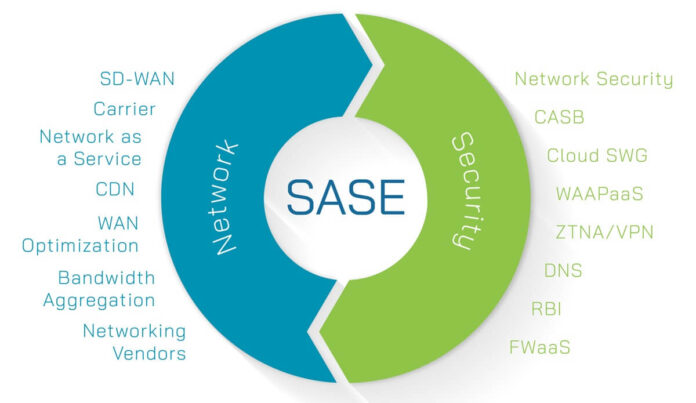In today’s rapidly evolving digital landscape, the traditional boundaries of corporate networks are becoming increasingly obsolete. With the widespread adoption of cloud services, remote work, and a diverse array of devices connecting to the corporate infrastructure, a new approach to network and security integration has emerged, known as Secure Access Service Edge. This innovative concept of SASE Provider offers a secure, simple, and efficient way to meet the challenges of our modern, highly dynamic business environment.
Embracing SASE for a Modern Network
The Old Way: Network and Security Silos
Historically, network security has been separate entities within an organization. Network teams focused on providing connectivity while the teams worked diligently to protect the network from threats. The segregation of these functions often resulted in inefficiencies, complexity, and gaps.
The Approach: Integration at Its Best
Secure Access Service Edge reimagines this traditional setup by unifying network and security in a single, cohesive architecture. This integration streamlines operations, improves safety, and enhances the user experience. Delve deeper into the components and benefits of this game-changing approach.
Key Components of Secure Access Service Edge
1. Cloud-Native Architecture
SASE leverages cloud-native technologies, enabling organizations to shift their network and safety infrastructure to the cloud. This approach provides flexibility, scalability, and the ability to adapt to changing business needs quickly.
2. Zero Trust Security
Zero Trust, a core principle of Secure Access Service Edge, assumes that threats may exist both inside and outside the network. By verifying and authenticating every user and device it ensures that only authorized entities gain access to resources, significantly
reducing the attack surface.
3. Software-Defined Wide Area Network (SD-WAN)
SD-WAN is an integral part of SASE, enhancing network performance and agility. It optimizes traffic routing, ensuring that applications run efficiently and reliably, even in complex network environments.
4. Identity-Centric Access
SASE focuses on user and device identity, rather than the traditional network perimeter. This approach allows organizations to grant precise access to resources based on individual identity and contextual factors, such as location and device safety posture.
5. Secure Web Gateways
SASE solutions incorporate secure web gateways to provide advanced web and content safety. By inspecting and filtering web traffic, these gateways protect users from web-borne threats and enforce company policies.
Implementing SASE: A Strategic Move
The implementation of Secure Access Service Edge requires careful planning and a strategic approach. Here are some key considerations for organizations looking to transition to this modern network and safety paradigm:
1. Assess Your Current State
Begin by evaluating your existing network and security infrastructure. Identify areas that require improvement and understand the unique requirements of your organization.
2. Define Your Strategy
Craft a comprehensive strategy that outlines your goals, implementation timeline, and expected outcomes. This strategy should align with your organization’s specific needs and business objectives.
3. Choose the Right Solution
Select a Secure Access Service Edge solution that suits your organization’s size, industry, and security requirements. It’s essential to partner with a trusted provider that offers the necessary expertise and support.
4. Training and Awareness
Invest in training for your IT and security teams to ensure they can effectively manage and monitor the new SASE environment. Additionally, promotes user awareness to facilitate a smooth transition.
5. Continuous Improvement
SASE is not a one-time project; it’s an ongoing initiative. Regularly review and update your SASE strategy to adapt to changing security threats and technology advancements.
Read Also: How To Use Digital Marketing To Boost Your Business Today
Conclusion
SASE Provider offers a forward-looking approach to network and security integration, aligning with the requirements of our modern, digital world. By unifying network and security in a cloud-native, Zero Trust framework, organizations can enjoy enhanced security, improved user experience, simplified management, scalability, and cost efficiency. To thrive in today’s business environment, embracing SASE is not just a choice; it’s a strategic imperative.




